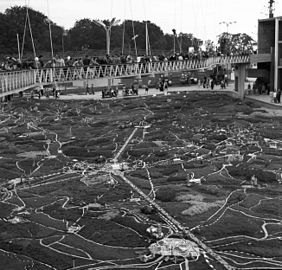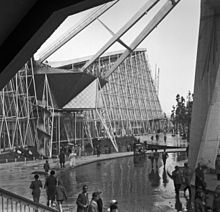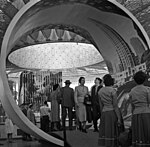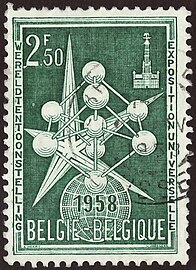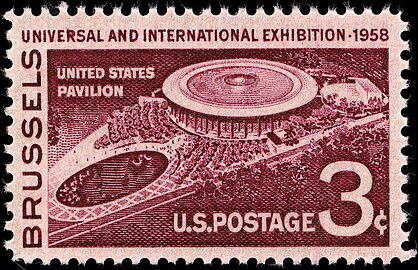
A world's fair, also known as a universal exhibition or an expo, is a large global exhibition designed to showcase the achievements of nations. These exhibitions vary in character and are held in different parts of the world at a specific site for a period of time, typically between three and six months.

The Atomium is a landmark modernist building in Brussels, Belgium, originally constructed as the centrepiece of the 1958 Brussels World's Fair. Designed by the engineer André Waterkeyn and the architects André and Jean Polak as a tribute to scientific progress, as well as to symbolise Belgian engineering skills at the time, it is located on the Heysel/Heizel Plateau in Laeken, where the exhibition took place. It is the city's most popular tourist attraction, and serves as a museum, an art centre and a cultural destination.
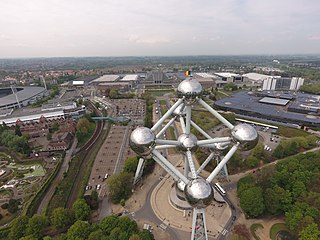
The Heysel Plateau or Heysel Park, usually shortened to Heysel or Heizel, is a neighbourhood, park and exhibition space in Laeken, northern Brussels, Belgium, where the Brussels International Exposition of 1935 and the 1958 Brussels World's Fair took place.

Laeken or Laken is a residential suburb in the north-western part of the Brussels-Capital Region, Belgium. It belongs to the municipality of the City of Brussels and is mostly identified by the Belgian postal code: 1020. Prior to 1921, it was a separate municipality.

The Exposition Internationale des Arts et Techniques dans la Vie Moderne was held from 25 May to 25 November 1937 in Paris, France. Both the Palais de Chaillot, housing the Musée de l'Homme, and the Palais de Tokyo, which houses the Musée d'Art Moderne de la Ville de Paris, were created for this exhibition that was officially sanctioned by the Bureau International des Expositions. A third building, Palais d'Iéna, housing the permanent Museum of Public Works, which was originally to be among the new museums created on the hill of Chaillot on the occasion of the Exhibition, was not built until January 1937 and inaugurated in March 1939.
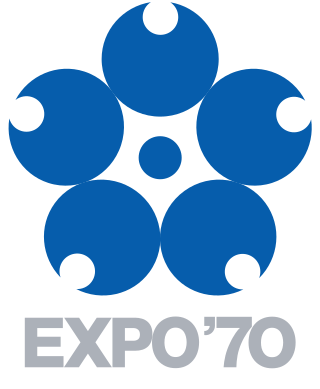
The Japan World Exposition, Osaka, 1970 or Expo 70 was a world's fair held in Suita, Osaka Prefecture, Japan between March 15 and September 13, 1970. Its theme was "Progress and Harmony for Mankind." In Japanese, Expo '70 is often referred to as Ōsaka Banpaku (大阪万博). It was the first world's fair held in Japan and in Asia.

Expo '75 was a World's Fair held on the island of Okinawa in Japan from July 20, 1975, to January 18, 1976.

The Royal Museum for Central Africa (RMCA), communicating under the name AfricaMuseum since 2018, is an ethnography and natural history museum situated in Tervuren in Flemish Brabant, Belgium, just outside Brussels. It was originally built to showcase King Leopold II's Congo Free State in the International Exposition of 1897.
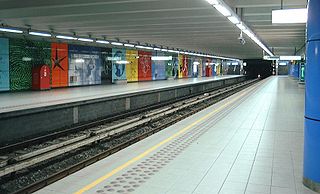
Heysel (French) or Heizel (Dutch) is a Brussels Metro station on line 6. It is located in Laeken, in the north-west of the City of Brussels, Belgium, and serves the Heysel/Heizel Plateau, famous for the World's Fairs of 1935 and 1958, the King Baudouin Stadium and the Atomium. The Bruparck entertainment park and the Centenary Palace, home to the Brussels Exhibition Centre, are also located nearby.

The Expo 67 International and Universal Exposition featured 90 pavilions representing Man and His World, on a theme derived from Terre des Hommes, written by the famous French pilot Antoine de Saint-Exupéry.

Victor Bourgeois was a Belgian architect and urban planner, considered the greatest Belgian modernist architect.

The Brussels International Exposition of 1935 was a world's fair held between 27 April and 6 November 1935 on the Heysel/Heizel Plateau in Brussels, Belgium.
Christine Conix is a Belgian architect whose projects have been described as innovative and diverse and creative. She created her firm Conix Architects in 1979 in the Antwerp city of Wilrijk; by 2007, her firm employed 67 people and by 2014, it had offices in Brussels, Warsaw, Rotterdam, Terneuzen, with the head office in Antwerp. In 2013, Conix architects won a contract to rebuild a Moroccan city named Nador to transform it into a center for economics and tourism, which involves constructing critical infrastructure such as houses, schools, and hospitals. Conix Architects designed a renovation and expansion for the Atomium in Belgium, a structure originally built for the 1958 World's Fair in Brussels. It designed the Belgian pavilion at the World Expo in Shanghai in 2010. Her firm won a contest among 28 architectural firms agencies for architectural work relating to the Vrije Universiteit Brussel. Conix believes intuition should play a large role in architectural design, and believes in sustainability, and sees no significant difference between men and women today in the field of architecture. She studied architecture at the Hoger Instituut voor Architectuurwetenschappen Henry van de Velde in Antwerp.

The Brussels International Exposition of 1897 was a world's fair held in Brussels, Belgium, from 10 May 1897 through 8 November 1897. There were 27 participating countries, and an estimated attendance of 7.8 million people.

The Ghent International Exposition of 1913 was a world's fair held in Ghent, Belgium, from 26 April to 3 November 1913.

The Brussels International Exposition of 1910 was a world's fair held in Brussels, Belgium, from 23 April to 1 November 1910. This was just thirteen years after Brussels' previous world's fair. It received 13 million visitors, covered 88 hectares and lost 100,000 Belgian francs.

The ING Arena is an indoor arena in Brussels, Belgium, that is part of the Brussels Expo complex. Located on the Heysel/Heizel Plateau in Laeken, it was originally built as the twelfth hall of the complex in 1989, but was extensively redesigned and reopened in its current form in September 2013. Until 14 September 2023, the arena was known as the Palais 12 in French or Paleis 12 in Dutch. It now hosts major events, such as concerts, conferences, entertainment shows and major sporting events for a maximum capacity of 15,000 people.
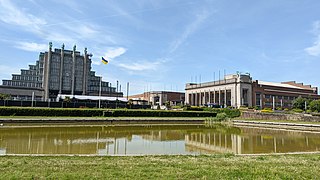
The Brussels Exhibition Centre, also known as Brussels Expo, is the most important event complex in Brussels, Belgium. Located on the Heysel/Heizel Plateau in Laeken, the twelve halls that comprise it are used for the largest national and international trade fairs, exhibitions and other events. With 115,000 m2 (1,240,000 sq ft) of facility space, they constitute the largest exhibition space in the Benelux. They are also a remarkable witness to the evolution of construction techniques during the 20th century.
Events in the year 1958 in Belgium.

Design Museum Brussels is a museum located in the Heysel/Heizel Park in Brussels, Belgium, close to the Atomium. The space focuses on design works from the 20th and 21st centuries. It was formerly called the Art and Design Atomium Museum (ADAM) until 2020. The size of the museum is 5,000 m2 (54,000 sq ft) and it received about 126,000 visitors in 2019. Arnaud Bozzini is the museum's director.





